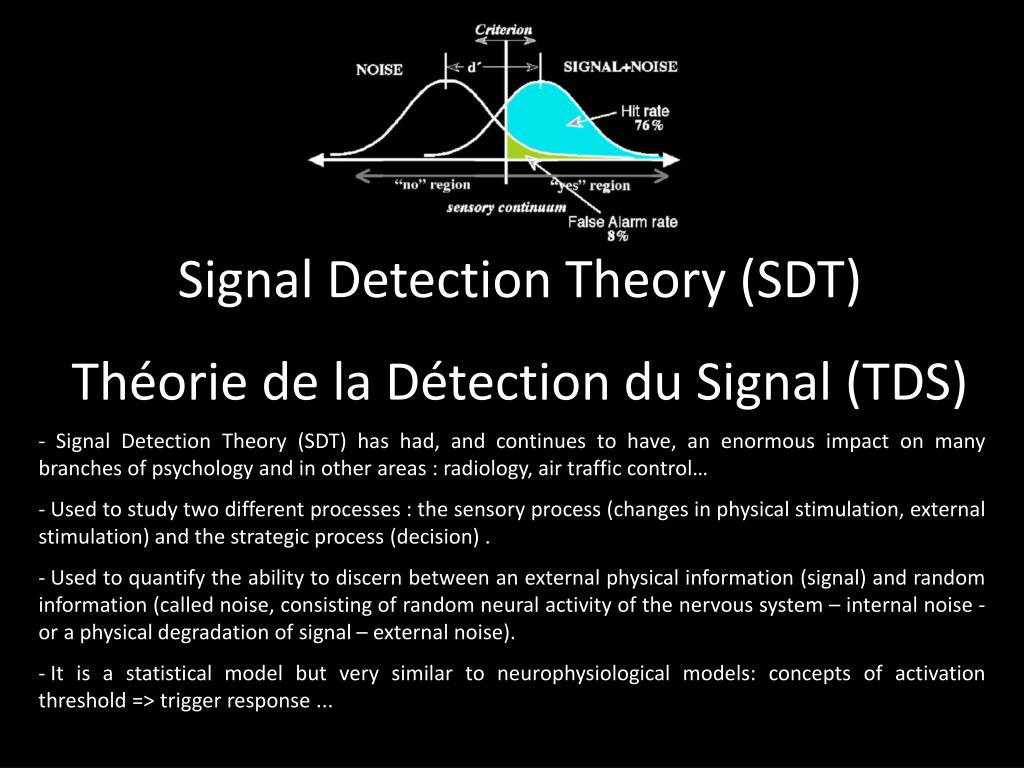
Psychophysics is guided by several laws, including Weber's Law, which describes the relationship between the magnitude of a stimulus and the perceived change required to detect a difference. These methods enable us to experimentally measure and understand the thresholds of our sensations.
SIGNAL DETECTION THEORY EXPLAINED FREE
You have signed an examinee agreement, and it will be enforced on this subreddit.ĭo not intentionally advertise paid or free products or services of any sort.Have you ever wondered how you perceive different degrees of sensation? When you experience a stimulus through your senses, you have a vague awareness of its presence, which is known as sensation. We have one "stickied" post for each exam and score release day, contain all test day discussion/reactions to that thread only.ĭo not discuss any specific information from your actual MCAT exam. For an example format for submitting pictures of questions from practice material click hereĭo not link to content that infringes on copyright laws (MCAT torrents, third party resources, etc).ĭo not post repeat "GOOD LUCK", "TEST SCORE", or test reaction posts. These are considered spoilers and should be marked as such. Be nice to each other, hating on other users won't help you get extra points on the MCAT, so why do it?ĭo not post any question information from any resource in the title of your post. Rudeness or trolling will not be tolerated. Please message the moderators with your skills/ideas! MCAT RESOURCES & INFO Study Groups

Want to help us improve this subreddit or tell us about a new resource we can add to the sidebar? Below you will find our forum rules, resources, and more. We request that you read the sidebar COMPLETELY before you post. r/MCAT is a place for support, discussion, advice, social networking, news, study tips and more. The MCAT (Medical College Admission Test) is offered by the AAMC and is a required exam for admission to medical schools in the USA and Canada. Welcome to the BEST place for MCAT prep and practice materials.


 0 kommentar(er)
0 kommentar(er)
